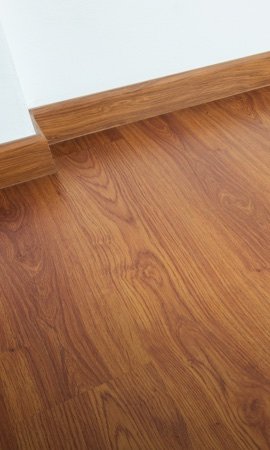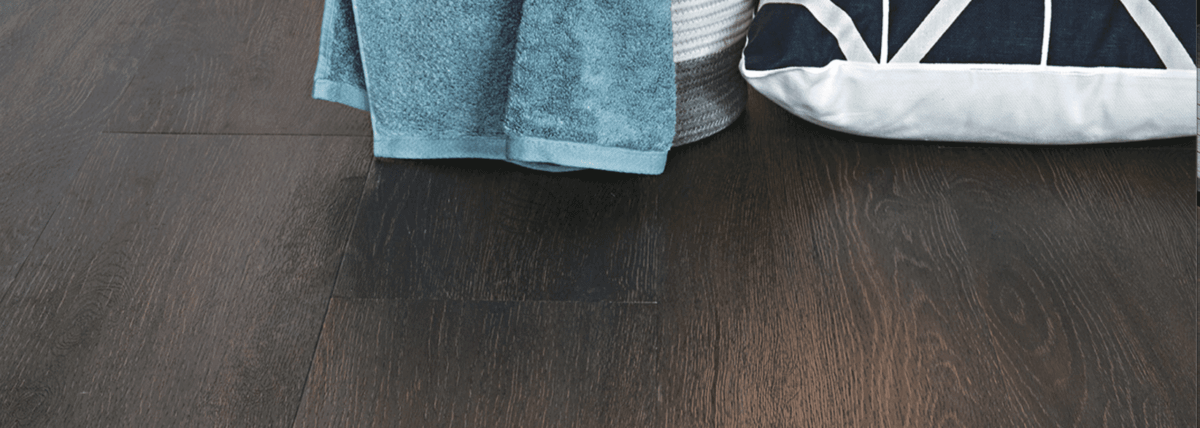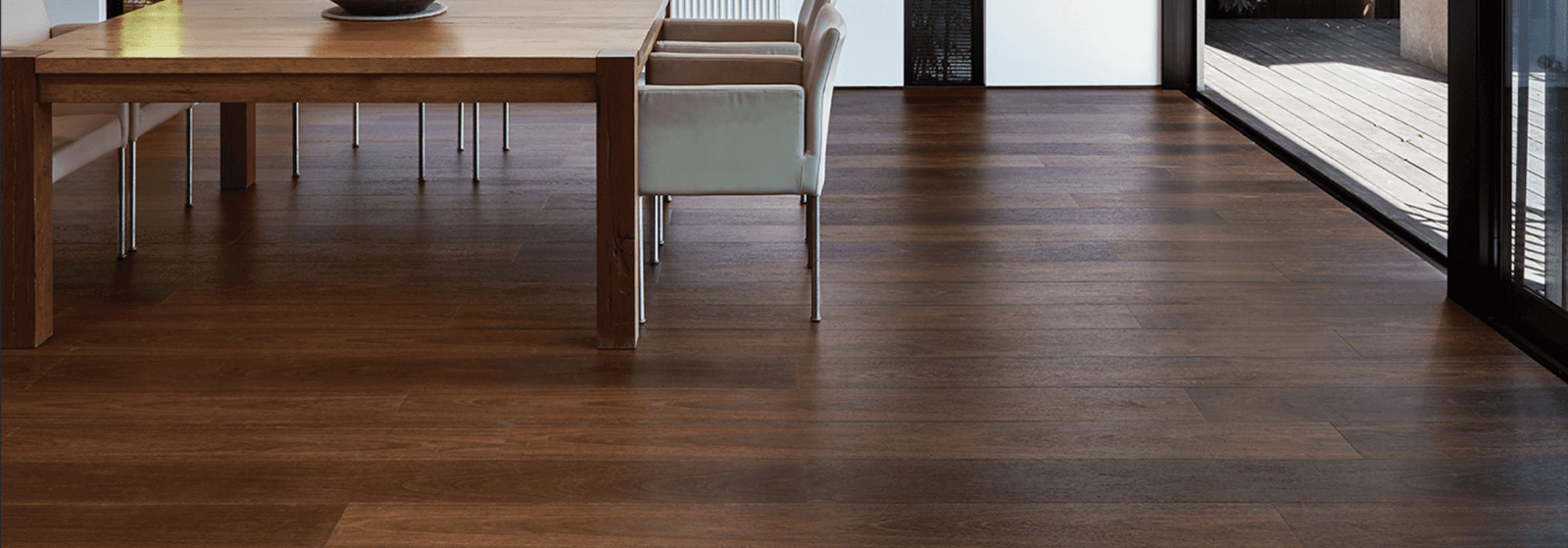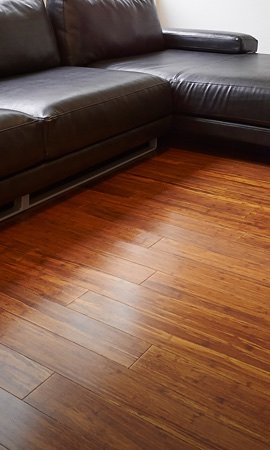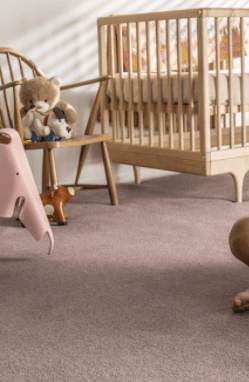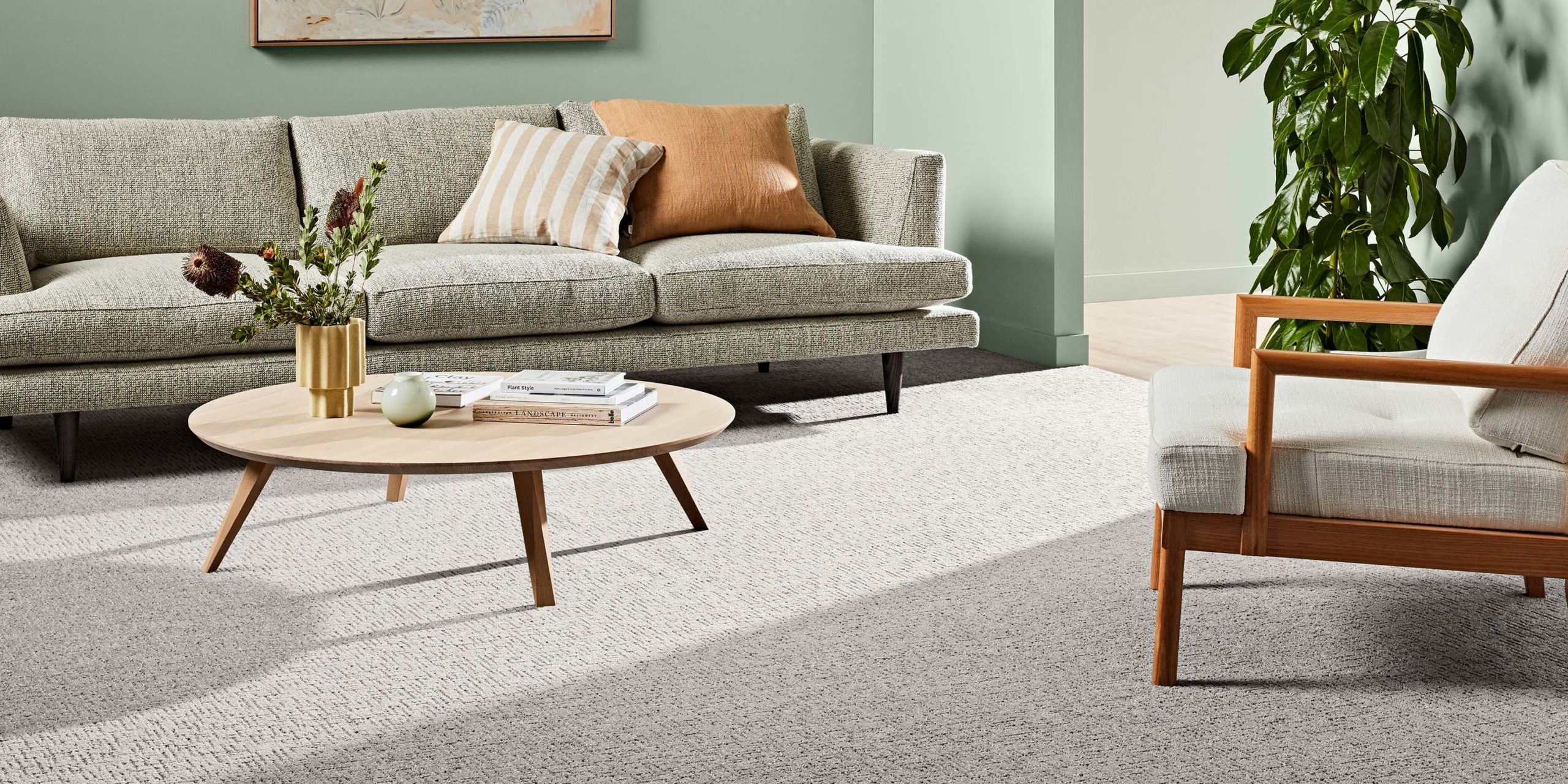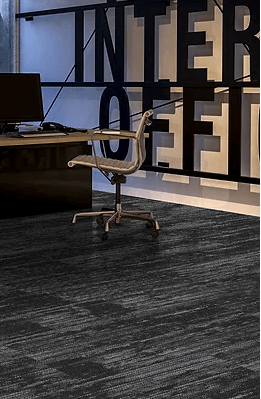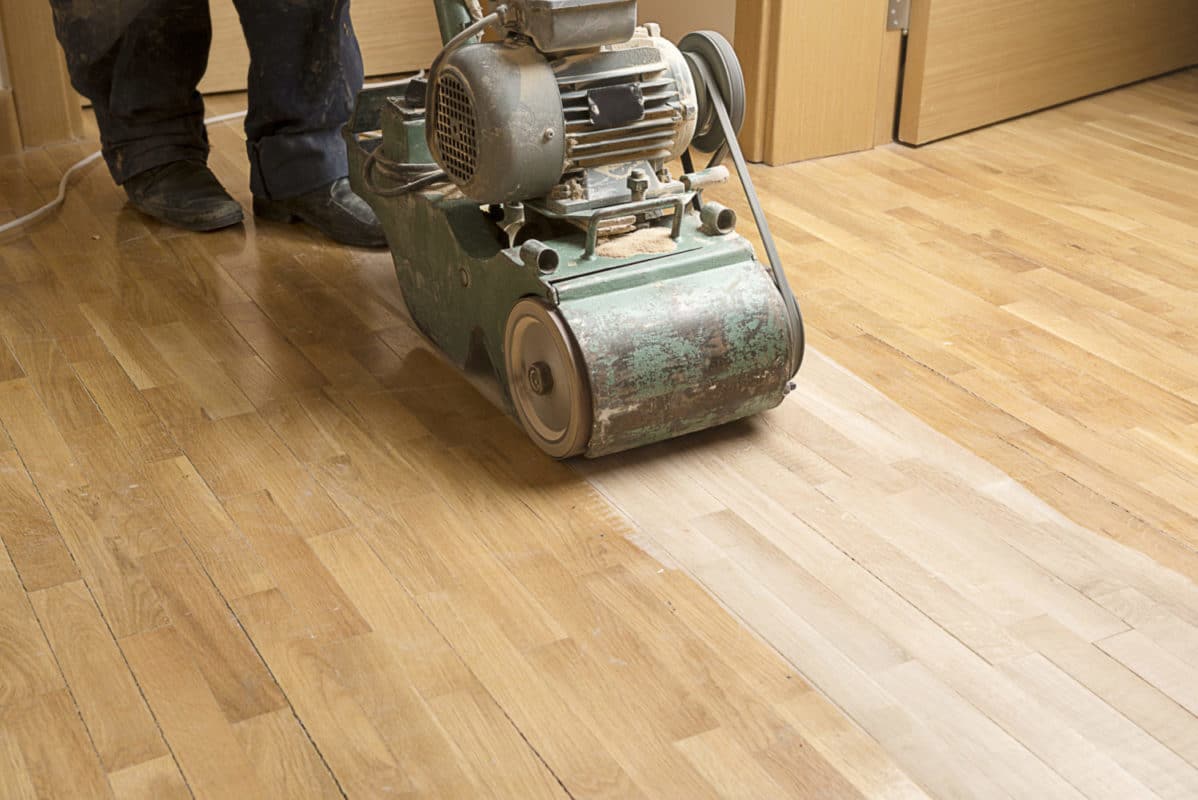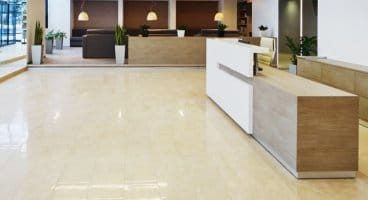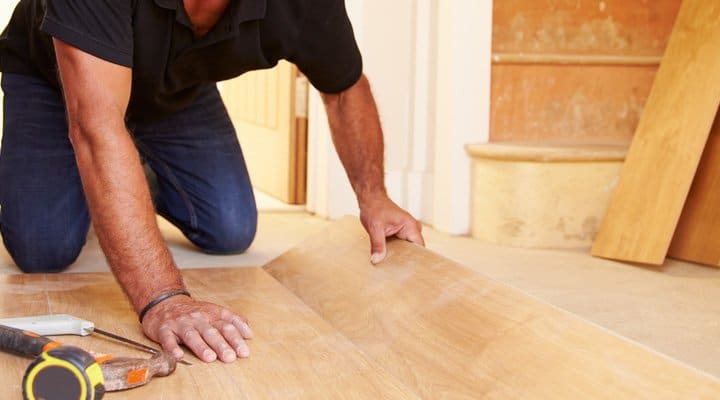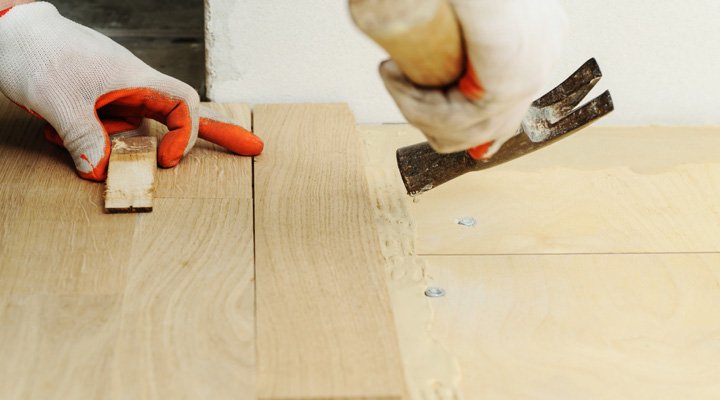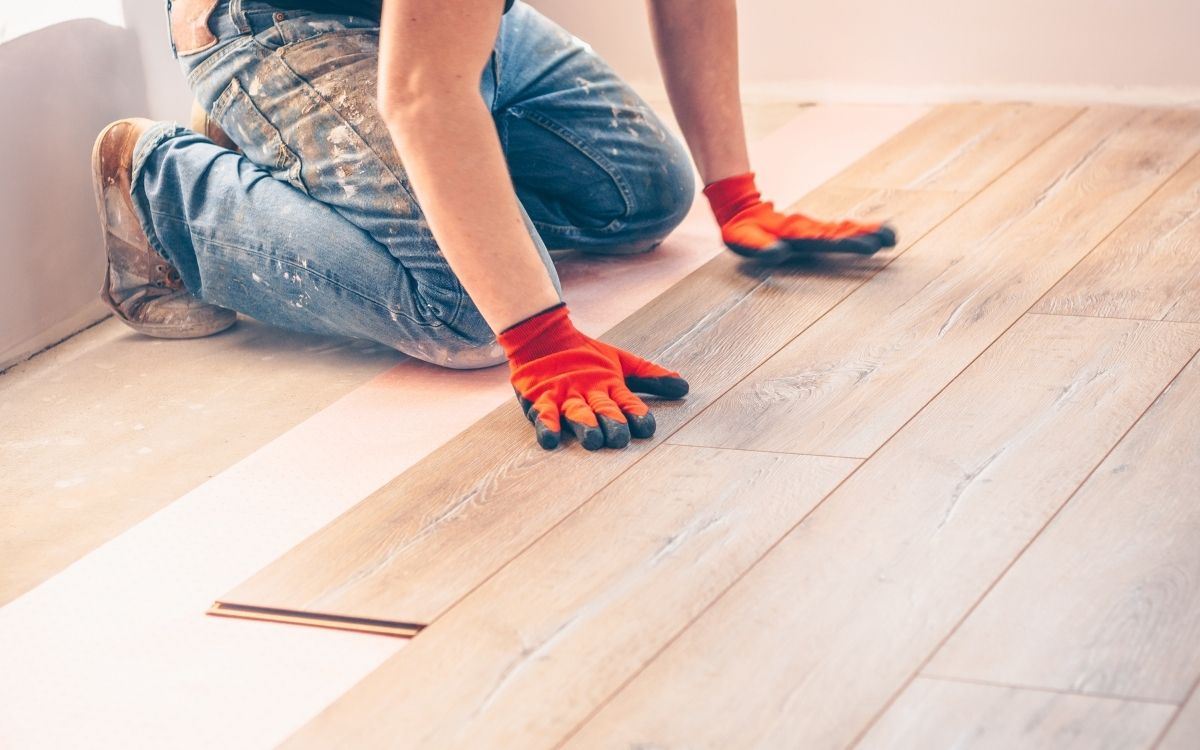

29 Apr What is a Floating Floor?
A floating floor refers to a type of floor that can be installed without the need for nails or glue, as it is held in place by gravity and friction, hence the name. It is most commonly found in laminate flooring, but has expanded to other ranges such as bamboo, engineered flooring and some vinyl planks. Floating floors have emerged as a time and cost effective option for homeowners to achieve their ideal stylish home look.
This guide will give you an introduction to floating flooring. We will help you make a decision on whether these planks are right for your home.


Where should floating flooring be installed?
Floating floors are the perfect fit for most homes, as all environments can benefit from an easy, efficient and quiet installation process. In particular, it will come in handy for apartments and units with strict strata policies on noise during installation. As floating floors don’t need nails and glue, the sound they generate when installing will be significantly decreased.
However, you do need to make sure your subfloor is very even, as the standards for installing a floating floor will be even higher than other nailed/glued down floors.
Overall, as long as the conditions are right, floating floors will be a perfect fit for any residential or commercial environment.
You can also check out our Ultimate Guide to DIY Floating Floor Installation [2021].
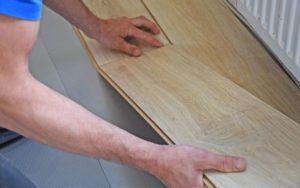

What types of floating floors are available?
Here are some of the many options available to you with floating flooring:
Laminate Flooring
Laminate flooring is made from layers of wood composite material, with a fine-printed photograph laminated on top to create an authentic timber visual. A key feature of laminate flooring is its high durability and scratch resistance. This is a cost-effective and low maintenance option for any people who want to save money, yet retain an authentic timber look for their floors. Laminate flooring jobs are made easier by the floating floor’s easy installation. Check out our wide laminate flooring range.
Engineered Timber
Engineered timber flooring is constructed with several pieces of plywood, and a real timber veneer on top. This flooring combines impressive durability and improved water resistance with authentic hardwood in its surface layer that is made entirely out of real timber. It is also constructed with other layers (usually plywood) which provide its stability and resilience. Click here to explore our variety of engineered timber floors.
Hybrid Flooring
Hybrid planks are an innovative new type of flooring that is made with multiple layers of materials, such as stone plastic composite and a UV coated wear and tear layer. With the help of rapid technological advancement, today’s hybrid plank floors feature this glueless locking system. Hybrid floors also provide waterproofing and embossed features capturing the essence of a real stone or hardwood flooring. Feel free to explore all of our hybrid flooring products here.
Bamboo Flooring
Bamboo flooring is a unique type of plank made from real solid bamboo which makes it harder and more durable than timber floors. These planks are a more sustainable and environmentally friendly option, also available with a floating floor as well as a wide range of colours to suit your individual tastes. Bamboo offers a unique grain pattern which some love. Click here for all of our full bamboo flooring range.
HydroPro Timber
The pinnacle of modern flooring technology now allows you to bring waterproof, authentic timber flooring into Australian homes. HydroPro Timber is an engineered floor that consists of a layer of real Australian hardwoods fused to a 100% waterproof base. As a floating floor, it can easily be installed into apartments and units alike.
Click on the link to browse all the floating flooring ranges we offer on our website. The image below is a floating engineered timber – Spotted Gum – from the HydroPro Timber range.
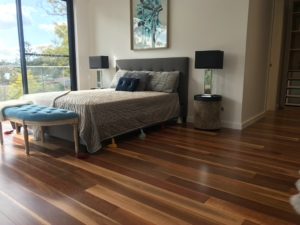

How do floating floors work?
Think of floating floor installation jobs as a massive jigsaw puzzle. The interlocking of many planks allows the forces of gravity and friction to hold them all together.
- Weight – The combined weight of all the floorboards locked together creates enough mass that accidentally moving them becomes virtually impossible.
- Friction – As the floating boards are installed over an underlay, this prevents sliding from underneath the floorboards as it creates friction.
- Click-lock – This floorboard’s strong locking mechanism ensures these planks are very hard to break apart, thus allowing the aforementioned processes to occur.
Pros and cons of floating flooring
Advantages of floating flooring
- Simple Installation (DIY) – This installation system allows you to install your flooring yourself as it is like a jigsaw puzzle, and does not require glue or adhesives. It allows you to be cost effective by eliminating the need to hire someone to do it for you.
- Easy repair (DIY) – As floating floors are not glued down to the subfloor, they are easy to remove and replace without any nails or adhesive to remove, making it convenient to clean. If the planks happen to get damaged, take off the skirting and remove the planks from the perimeter before replacing.
- Apartment/Unit friendly – The floating flooring’s tongue and groove click system not only makes the installation process effortless, it also makes significantly less sound, particularly useful if your complex has strict strata policies.
Disadvantages of floating flooring
- Structural Durability – Floating floors are more susceptible to expansions and contractions from temperature fluctuations and atmospheric moisture. This means you’ll see more floorboard movements, which can lead to warping and cupping of floorboards if they are not waterproof.
- Sound – Floating floors are less effective at absorbing noise compared to direct-stick installations. This may require acoustic underlay, especially when meeting strata requirements (A necessary evil which must be met in apartments and units).
- Requires an even subfloor – Excessive force or long term wear on an uneven subfloor may cause the planks to break apart faster. Installing floating floors on an uneven subfloor is not only ill advised, but can void any structural warranties which products may offer.


Conclusion – Should you get a floating floor?
Floating floors are a versatile option that can be suitable for any home and circumstance. Especially if you are one who favours convenience. This installation system allows you the flexibility of DIY as well as easy repair and replacement without annoying your neighbours.
This is definitely a versatile choice for any residential or commercial environment. The majority of disadvantages will be offset with good preparation and an inspection of your subfloors to ensure suitability for installation. You can book your free consultation with FloorVenue today.

